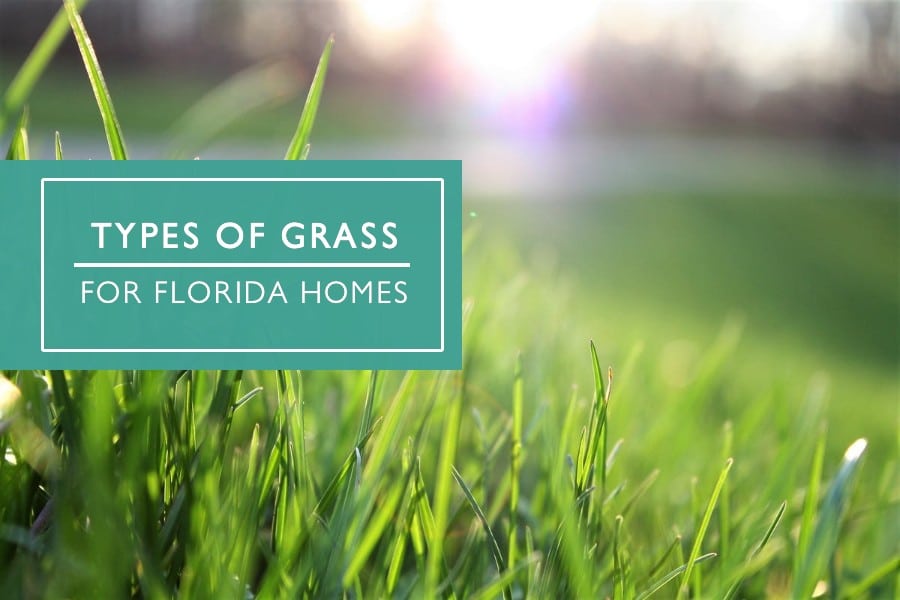If your new home doesn’t have a lawn yet or you want to reseed your current one, you have different varieties of grass to choose from. They each have a different texture, appearance, and maintenance.
It’s best to choose a lawn based on its climate compatibility, irrigation system, and soil adaptability. You also have to consider the size of your home and lifestyle. If you have pets or kids that love to play outdoors, then you will need to get grass that can withstand foot traffic. There is also the time and effort you can sacrifice when maintaining your lawn.
To help you decide, here are some of the popular grass that Florida homeowners get for their lawn.
St. Augustine grass
This type is a favorite among Florida homeowners. It adapts well in a warm climate, loves our Florida sun, has a high level of salt tolerance, and resistant to drought. But this grass will still require irrigation and needs to be watered regularly to maintain its appearance.
St. Augustine grass can grow in different types of soil and then it spreads by above-ground runners, giving homeowners a dense lawn coverage. It crowds out weeds and other types of grasses.
You can plant this grass by sod, plugs, or springs, but it’s quite difficult to find its seeds. If you water it two to three times a week during the summer, you can maintain its thick turf and broad grass blades with a dark greenish-blue color. Water it more frequently if its appearance doesn’t change for the better.
Some may prefer their grass to grow quickly, but the downside is that you have to regularly cut or mow it. This grass doesn’t do well in a cold environment or shady areas. It’s also better for homes with low traffic. Watch out for pests such as chinch bugs and be prepared for St. Augustine Decline (SAD) virus and other fungal diseases.

If you need to fix a part of your St. Augustine grass, here’s a patch lawn repair you can use.
Zoysia grass
Zoysia grass thrives in the sun, resistant to drought, adapts to different soils, and has a dense turf that crowds out weeds, similar to St. Augustine grass. But what makes Zoysia grass different is that it can withstand more traffic, which is why it is popular in coastal areas and golf courses. It’s also better at handling shade and is stronger against diseases. This grass requires less water, can survive with little fertilizer, and don’t need to be mowed as much.
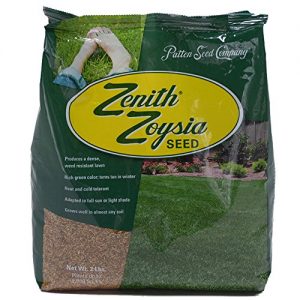
It can be planted by seed, plugs, or sod, and it spreads by stolons and rhizomes. This grass is sometimes considered the most beautiful grass for turf, with its soft texture and dark green color. It’s best to plant Zoysia grass in the summer or spring.
When the soil’s temperature goes below 70 degrees, Zoysia grass will stop growing. It doesn’t grow as fast as St. Augustine and needs two years to grow. The slow growth rate means it also recovers slower when infected by a disease.
Centipede grass
If you want a low-maintenance lawn, Centipede grass is one of the best options for you. It has low vertical growth and doesn’t need to be frequently mowed. This grass thrives in a warm climate and it can also grow in a cool environment and shady places.
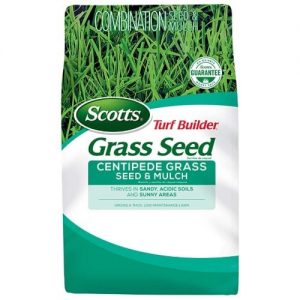
Centipede grass can be planted by seeds and then it spreads by stolons. You will need fertilizer to maintain its health and yellow-green appearance. But make sure not to over-fertilize since it can be sensitive to fertilizers.
Unfortunately, this grass isn’t suited for homes with a lot of traffic since it’s not as dense as the others. It also has low salt tolerance and tends to get infected by ground pearls and nematodes.
Bermuda grass
Bermuda grass has a deep root system which makes it more durable and resistant to drought. It is also great at crowding out weeds and can withstand high traffic better than other types. Similar to Zoysia grass, this grass is commonly used on golf courses as well as in athletic fields.
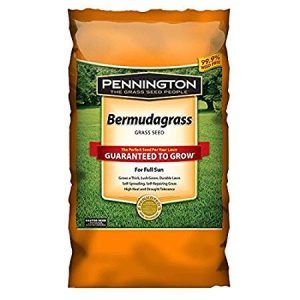
This type can be planted using seeds or sprigs in different types of soils. It produces a dense turf and spreads by runners and rhizomes. Bermuda grass has short blades with rough edges and appears with a greyish green color.
Not a lot of homeowners choose this grass because it is highly invasive and will spread into nearby gardens and flower beds aggressively – that’s why it is sometimes called devil’s grass. It needs to be watered weekly to maintain its appearance. Similar to the other types, it cannot withstand cold temperatures and shady areas. You will also have to watch out for the common pests.
Bahiagrass
For homeowners who live in an area with little to no irrigation, their favorite type of grass is Bahiagrass. It thrives in hot and dry climates and doesn’t require a lot of fertilizer, which makes it a great option for homes with a large yard or pasture. This type has a durable root system which makes it more tolerant to drought. You don’t have to worry much about lawn pests or diseases with this grass.
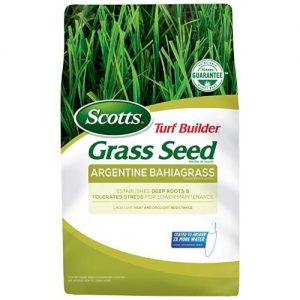
Bahiagrass can be planted using seeds and works well in less fertile sandy soils. It produces coarse blades that have an apple green color.
It’s not as strong as some of the other types since it can only withstand moderate traffic. Make sure not to overwater this grass and it also won’t grow well in shady areas. You might need to mow it weekly since it grows quickly.
Buffalo grass
Similar to the other types of grass, Buffalo grass can withstand high temperatures and drought. It’s easy to manage around gardens and flower beds because they aren’t as invasive, and it would do well in lawns with difficult soil.
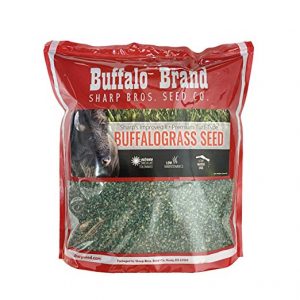
This type can be planted using seeds and can grow in different varieties of soil. It produces a tight sod and curling blades with a greenish-blue color. Buffalo grass creates a finely textured and lush turf. You don’t need a lot of fertilizer to grow this grass in your yard.
It’s not as durables as the others since it cannot withstand high traffic and won’t do well in shady areas. Make sure not to overwater or else it will be susceptible to diseases. Buffalo grass is not as great at crowding out weeds, so prepare your weed whacker.
If you want to know about the common pests and diseases that can infect Florida lawns, you can read about them here.

